 In my lead up to the Oscars next month, I’m slowly watching Oscar movies I haven’t yet seen in my spare time. A couple of nights ago, the selection was My Left Foot.
In my lead up to the Oscars next month, I’m slowly watching Oscar movies I haven’t yet seen in my spare time. A couple of nights ago, the selection was My Left Foot.
I have avoided this movie since it came out despite Daniel Day-Lewis being in my top three favorite actors, if not my number one (he’s neck-and-neck with Clark Gable in that race). Something about My Left Foot has always terrified me. I can’t quite explain it but I’m sure you can draw conclusions. I’m severely disabled. Christy Brown was severely disabled. I’m an artist and writer. Christy Brown was an artist and writer. The idea of watching a film with Daniel Day-Lewis reportedly mastering being so severely disabled seemed to fall under the category of “hitting too close to home” for the last 20-something years. The problem was I don’t like claiming people as “favorite” in anything without examining their entire body of work. So I set aside my peculiar fear of this movie, cuddled my dog for comfort, and reluctantly clicked My Left Foot on Netflix.
It took twice as long to get through the entire movie as its runtime because I kept having to stop and take breaks. By the end, my eyes were so red and glassy from the exhausting emotional experience that my family tiptoed quietly around me as if I might have another one of my panic attacks to which I am prone. As I suspected, I would not have been capable of watching something like that when I was younger. Following my instinct to not see it 24 years ago was correct. I saw so much of myself in Christy Brown that it was like having certain old wounds ripped open and exposed to the world. Something about Daniel Day-Lewis – a decidedly able-bodied and athletic man – so thoroughly and masterfully crossing over into my world, so to speak, disturbed me in a way that I haven’t yet been able to understand. I think it had something to do with being reminded of how easily he could cross over into my physical world, while I can never cross over into his physical world. I will never climb through the rugged Irish countryside for solitude, or experience the thrill of speeding on a motorcycle, both things that he reportedly does. Human experience will always be limited for me. Yet this man who immersed himself in my world for this film managed to drag out the darkest parts of this kind of life into harsh, blinding light just by the pain in his eyes and the rawness of his performance. I didn’t know whether to love or hate Day-Lewis for exposing the darkness.
Day-Lewis’ interaction with the disabled community, and dedication before, during, and after the film made it even more compelling to me. He’s famous for being “obsessive” and “so Method” in his movies. I read that he spent months at a hospital for severely disabled people in Ireland getting to know them and learning to live that way. During filming, he couldn’t jump in and out of character, so he remained in his wheelchair even when the cameras weren’t rolling. Crew members were reportedly irritated by having to haul his wheelchair around for different setups. People had to feed him and give him drinks on breaks as well. When his English agent visited the set, he reportedly refused to jump out of character and the agent left in a frustrated huff. Being contorted in hunched positions that come with cerebral palsy broke two of his ribs but he kept filming with little to no complaint. And when he won his Best Actor Oscar for playing Christy Brown, he took the award back to the hospital where the disabled patients taught him to live that life and he spent a day letting them look at his Oscar in person and spent time with them.
Truthfully, there was no other way to approach this story from where I sit. If you open yourself to the claustrophobia of existing in a body that won’t obey your alert and beautiful mind, you have to be willing to go through the mental anguish of feeling trapped, rejected, and misunderstood. You have to be willing to find a way to push yourself through the imprisonment into a world of your own creation while everyone around you seems to push you back into entrapment for the sake of simple survival. If I ever got to speak to Day-Lewis, I would ask him directly if he ever felt trapped in his own body while filming. If so, then he truly grew as a human being.
Many parts of the film could have easily been lifted from my own life. I was rather bothered when teenage Christy was with the other neighborhood kids playing spin the bottle and none of the girls wanted to acknowledge it when the bottle pointed to him. His guy friends stood up for him and the girl only kissed his cheek because they pressured her into it. Christy always seemed to be so painfully aware that his peers were moving past him and having boyfriends or girlfriends while he was not. He was a normal adolescent inside though, and craved those romantic connections. He liked the girl and painted her a sweet little picture to tell her so. At first, she swooned quite dreamily, thinking the romantic gesture was from his brother. When she realized it was from Christy, she took it back to him and told him she couldn’t accept it. She couldn’t accept the feelings of a man with such a severe disability, made obvious by the fact that she thought it was wonderfully romantic until her friends pointed out the true artist. Christy was largely left behind his peers.
The same story repeats itself over and over again no matter if it’s 1950 or 1990. I don’t have cerebral palsy like Christy did but my disability is no less “frightening” or “intimidating” to many who cross my path. I became aware of exactly how unsuitable I was as a girlfriend in middle school going into high school. Like every girl, I had my fair share of crushes. I watched my friends pair up, have first kisses, go on dates, etc., but it never happened for me. I learned to make boys laugh in an effort to make up for my physical shortcomings, and they were perfectly happy to pal around with me, but no boy ever had a crush on me. I knew exactly why. I knew as clearly as I knew the pain in Day-Lewis’ Christy when he was rejected more than once by ladies. Occasionally, I got brave early on if I liked a boy. I would tell him so. Rejection without looking me in the eye or giving me a clear reason why came too many times and I basically stopped trying when I reached my junior year in high school. I never had dates to dances, I never really went to parties, and I never had a prom date. The first boy I ever really loved came along my junior year – more than a simple crush – but by that time, I lost all nerve to try. Carl was on the football team and his girlfriend was a cheerleader. I never stood a chance and I knew it. Not only was I in a wheelchair but I lived with an abusive stepfather, so I was rather insecure, quiet, and unwilling to expose myself to more pain. He may or may not have known about my feelings – I don’t know. He was my friend regardless. To a teenage girl in love, though, friendship was just a consolation prize.
Christy Brown had a similar relationship in the film with his doctor. He fell in love with her through their friendship and she married someone else, which shattered the last hope in life that he had, and led him through the black door of considering suicide. The film depicts Day-Lewis as Christy grasping a pencil with his foot and writing a suicide note – “All is nothing, therefore nothing must end.” He then dropped the pencil and picked up a straight razor, which he attempted to use in slashing his own wrist but failed because of his own limitations. This was when the thought popped into my head: “I didn’t know whether to love or hate Day-Lewis for exposing the darkness.” Suicidal tendencies or full-fledged suicide attempts are a very dark secret among the disabled – so much so that we don’t even talk about it among ourselves in hushed tones. When the full weight of never leading an easier life and facing a life of solitude settles upon your shoulders, the weight presses you further and further into the grave if you allow it.
My method was not going to be slashing my wrists. Women very rarely mutilate their bodies in suicide, I’ve learned since then. I’ve been suicidal twice in my life to the point of formulating plans of how I was going to do it. The first time was as a senior in high school. My former stepfather was regularly sexually assaulting me for quite some time, combined with a lot of other issues related to facing 60 more years as a quadriplegic. I calculated how many sleeping pills it would take – not many because I’m small. The second time came at age 24, a few months after my miscarriage. I was in an abusive relationship and entirely blamed myself. If the only people who wanted to be in my life were parasites, then there was no reason to live. That time, it was going to be oxycodone and vodka. And as I watched Christy Brown fail at his escape attempt, I thought again what a cruel twist of the universe that people like us couldn’t even physically accomplish the escape. These severe disabilities are the only prisons from which escape is truly impossible. I have since found better spiritual footing and I abandoned those plans after the second time, but the devil does lurk in the darkness once in a while.
The only time I felt a sense of calmness or reprieve in this difficult film was when Christy was painting. There were only short glimpses of Day-Lewis acting out the process but it was calming to see it. Day-Lewis apparently could not master it with his left foot but he could with his right foot, so many of those scenes were shot through a mirror to give the illusion of being his left foot. I’m not surprised. I’m right handed and my right leg is also dominant. Day-Lewis is also right handed, so his right leg would be dominant too. In the opening sequence, Day-Lewis pulled a record from its sleeve, put it on the record player, and set the needle with his foot. He practiced doing it so much that he did it successfully on the first take. Unlike Christy Brown/Daniel Day-Lewis, I don’t have the flexibility or dexterity to paint, write, etc., with my feet. I do it with my mouth as you can learn here. Painting and writing are indeed the only times when I feel wholly at peace and rarely think of the difficulty in my life. I expect at least part of Christy Brown must have felt that same sense of peace. That may be why I was able to relax when watching those sequences, although they may still have been disturbing or pulled some other emotion from watching it. I especially related to the sequence in Christy’s gallery showing in which being a “crippled artist” vs simply an artist was briefly mentioned. People like Christy and me have probably never felt (or past tense as he is dead) secure in knowing whether people admire our art because it’s good or because we created in weird ways.
My only problem with My Left Foot was the somewhat misleading end. It appeared that Christy Brown finally got his happy ending by marrying Mary Carr, but what the movie doesn’t show is her alleged and probable abuse within that marriage. I confess, I was disappointed when I read the allegations. I had hoped Christy found some peace and contentment in life, but it has been reported that his wife was repeatedly unfaithful and bruises on his body at the time of his death suggested she was beating him. As disappointed as I was, I can’t say that I was entirely surprised. Abuse rates among the severely disabled have always been shockingly high compared to other minority groups. Among women, reports say that between 57% and 63% will be sexually or physically abused in their lifetime. People in general with disabilities are twice as likely to face abuse than the average population. I have been abused in every form by different people in different periods of my life, so these statistics are, unfortunately, a grim reality. I think the statistics were probably higher in Christy Brown’s generation. Still, I wanted to believe he got a happy ending like the film suggested but I suspect it wasn’t that happy. It is like filmmakers to tie up everything in a pretty bow though. As a storyteller in my own right, I understand why the ending happened the way it did.
Part of this passage written by Christy Brown himself was quoted at the end of the film. It struck me because I could not have found these words in my own vocabulary, yet it reflects my heart and mind as exactly as it reflected his heart and mind. Read:
“It would not be true to say that I am no longer lonely, now that I have reached out to thousands of people and communicated to them all my fears, frustrations and hopes which for so long lay bottled up inside me. I have made myself articulate and understood to people in many parts of the world, and this is something we all wish to do whether we are crippled or not. It is a common need to make ourselves understood by others, for none of us can live entirely alone or by our own devices. Yet like everyone else I am acutely conscious sometimes of my own isolation even in the midst of people, and I often give up hope of ever being able to communicate with them. It is not the sort of isolation that every writer or artist must experience in the creative mood if he is to create anything at all. It is like a black could sweeping down on me unexpectedly, cutting me off from others, a sort of deaf-muteness.”
I couldn’t have said it any better myself. The film was as dark as it was inspiring. And I still haven’t decided whether to love or hate Daniel Day-Lewis for exposing the darkness of imprisonment within these bodies in his performance. Once you open the door to hell, you cannot shut it again. You can only spend your life trying to stay on the safe side of it where inspiration, art, and love exist. Although I’ve looked through the doorway to hell more than once, just as Christy Brown did, I’m still here and I still know how to smile, paint, write, and live.

Read More
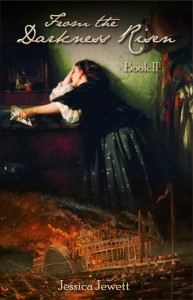 The second book in my Civil War trilogy is nearly done. Praise be to the muses. I know you readers have been waiting for it. Life gets in the way of literary pursuits sometimes, especially when I’m forced to rely on other work for income. I always find it hilarious when people assume being an author equates being rich. Hardly.
The second book in my Civil War trilogy is nearly done. Praise be to the muses. I know you readers have been waiting for it. Life gets in the way of literary pursuits sometimes, especially when I’m forced to rely on other work for income. I always find it hilarious when people assume being an author equates being rich. Hardly.














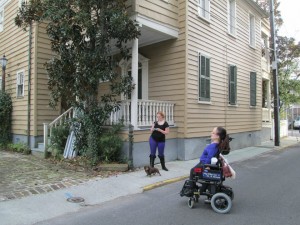

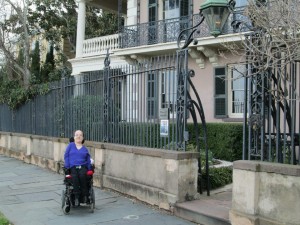




 Last month, I began a new tradition in my blog of doing a collective book review at the end of every month. There were five books I read last month and they were all over the board as far as subjects. Some were paranormal, some were fiction, and one was a letter collection. I thought it was a good idea, not only for myself in keeping track of what I read, but also for people who ask me quite often what I’m reading right now.
Last month, I began a new tradition in my blog of doing a collective book review at the end of every month. There were five books I read last month and they were all over the board as far as subjects. Some were paranormal, some were fiction, and one was a letter collection. I thought it was a good idea, not only for myself in keeping track of what I read, but also for people who ask me quite often what I’m reading right now.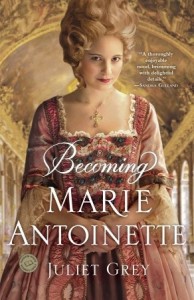 Becoming Marie Antoinette
Becoming Marie Antoinette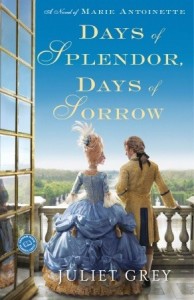 Days of Splendor, Days of Sorrow: A Novel of Marie Antoinette
Days of Splendor, Days of Sorrow: A Novel of Marie Antoinette
 In my lead up to the Oscars next month, I’m slowly watching Oscar movies I haven’t yet seen in my spare time. A couple of nights ago, the selection was My Left Foot.
In my lead up to the Oscars next month, I’m slowly watching Oscar movies I haven’t yet seen in my spare time. A couple of nights ago, the selection was My Left Foot.